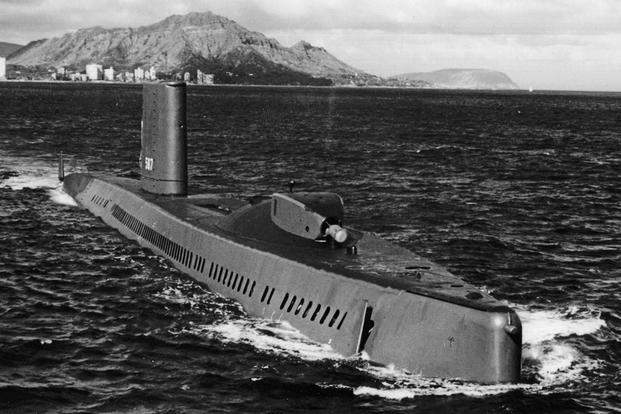At the beginning of the 1970s, divers from the specially equipped submarine, USS Halibut (SSN 587), left their decompression chamber to start a bold and dangerous mission, codenamed "Ivy Bells."
Nearly 400 feet beneath the frigid waters of the Sea of Okhotsk, deep inside Soviet territorial waters, the divers stayed alive only by the umbilical cords that pumped warm water into their dive suits.
In an effort to alter the balance of the Cold War, these men scoured the ocean floor for a five-inch diameter cable carrying secret Soviet communications between military bases.
Capt. James Bradley conceived the mission and firmly believed that he could find the tiny Soviet cable under the immense expanse of the ocean. Bradley remembered the signs that he saw during his childhood along the Mississippi River, warning boaters not to anchor near cables. He rationalized that the Soviets would use similar signs and lead him right to his target. Bradley's theory proved correct when the Halibut located a series of such signs in the Northern part of the Sea of Okhotsk, after an arduous search.
The divers found the cable and installed a 20-foot-long listening device on it. Designed to attach to the cable without piercing the casing, the device recorded all communications that occurred. If the cable malfunctioned and the Soviets raised it for repair, the bug, by design, would fall to the bottom of the ocean. Each month, Navy divers retrieved the recordings and installed a new set of tapes.
Upon their return to the United States, intelligence agents from the National Security Agency (NSA) analyzed the recordings and tried to decipher any encrypted information. The Soviets apparently were confident in the security of their communications lines, as a surprising amount of sensitive information traveled through the lines without encryption.
The Americans continued their operations undetected until 1981, when one day, surveillance satellites showed a number of Soviet warships, including a salvage ship, anchored over the undersea cable. Another intelligence-capable submarine, USS Parche (SSN-683), was quickly sent to the site to retrieve the pod. Unable to find the tap, the Parche's divers realized that the Soviets had discovered the operation. The submarine made it back to the United States safely, leaving American leaders to determine how the Soviets had suddenly detected the tap.
After a long probe, U.S. counterintelligence agents determined an NSA employee, Ronald Pelton, betrayed Operation Ivy Bells to the Soviets. He sold the secret of Operation Ivy Bells for $35,000, which ended nearly a decade of espionage. Pelton was later convicted and sentenced to life in prison. The original tap that was discovered by the Soviets is now on exhibit at the KGB museum in Moscow.
Want to Know More About the Military?
Be sure to get the latest news about the U.S. military, as well as critical info about how to join and all the benefits of service. Subscribe to Military.com and receive customized updates delivered straight to your inbox.















